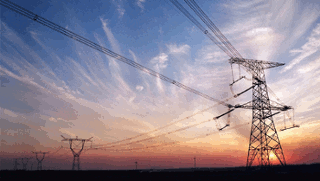Distributed power grid management based on space technologies

This project evaluated the contribution of space technologies for power grids management, when distributed renewable energy plants are present in the grids.
Summary
Following the current trend and policies of Europe with regard to the increasing share of renewable power plants (solar, wind, etc), for which the power output is not centrally controllable but dependent on natural resources, the power grid management will likely need to adapt to this different situation once a threshold share for their contribution will be passed. This Study is quantifying the potential benefits of space systems elements in an integrated power-grid management system optimised for such conditions. As obvious elements, earth observation, telecommunication and navigation/timing services from space are being considered, but the Study will essentially also assess their best integration and trade-off their benefits with respect to purely terrestrial alternatives.
Introduction
Due to the shortage of fossil fuels and to the urgent need of reducing greenhouse gas emissions, research and development of electrical power generation systems based on renewable energies is massively growing. The European Union has set as indicative target the increase of the share of electricity from renewable energy sources up to 21% by 2010 and further increases beyond. In 2001 renewables accounted to 15.1% of electricity production in IEA countries, the average quota of wind and solar generated electricity amounting to only 0.4%. High growth rate in some countries and fast technical evolutions will continue to increase the share of renewables over-proportionally (e.g. 60% average wind generation growth in Germany between 1990 and 2001). The extrapolation of these average growth rates leads to the conclusion that within the next decades the portion of electricity generation from renewable energy sources and in particular from solar and wind plants will be significant. Electric power transmission systems collect power from the conventional plants as well as from different renewable sources (solar, wind, biomass, and hydro) and deliver it to the final users. At the same time, they will collect electrical power produced by final users themselves, e.g. from industries and private households equipped with small-scale generation plants, as is, at a smaller scale, already occurring in several European Countries. The combination of public and small-scale private generation units and the ongoing European integration of regional electricity grids will require more and more sophisticated management in order to achieve higher reliability and efficiency. Fundamental aspects for the management of such complex grid systems will be: accurate forecast of electrical load and of the power generated by the renewable energy supply systems, decentralized control and management, power grid synchronization and rapid information and data exchange.
Towards large antennas
The exiting, University-led experiments have a serious background: several space applications require large structures, as e.g. obtaining high resolution from large distrance. All available techniques have their limitations: inflatable structures, manual or robotic assembly of constructions in space, rigid deployables, formation flying. The Furoshiki concept is taking advantage of formation flying properties, but by adding some additional elements and stability: the satellites are still loosely connected and very small independent (wireless communication, onboard PV power supply and processing units) antenna elements could be launched together and then find their respective position on the net and eventually reconfigure automatically to optimised configurations.
Study objectives
In the energy scenario of 2010 and beyond, the integration of different systems and technologies such as earth observation, telecommunications and navigation satellites into the management practise of a sustainable power grid is foreseen as a key factor for a better exploitation of the resources as well as for an increased power grid performance (i.e. increased electrical efficiency, grid stability and power quality). Earth observation from space can assist the management of the distributed power grid by providing accurate resource mapping and weather monitoring parameters to be used in the energy production and load forecast modelling. Satellite navigation services can contribute to the synchronization of the network which is essential for the grid reliability and stability, whereas telecommunication satellites can be part of the global and robust real-time communication infrastructure needed. The goal of this Study is to provide a quantification of the advantages of such an integrated system together with a trade-off with respect to purely terrestrial alternatives.